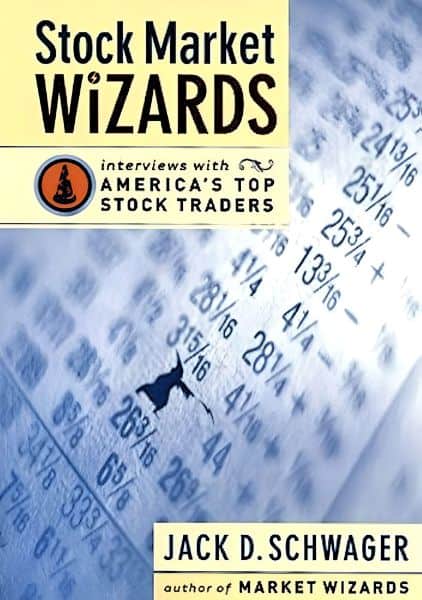Tony Saliba is a successful options trader who started his career in 1978 on the Chicago Board Options Exchange. He built his fortune by exploiting rare trading opportunities while also having excellent risk control. Saliba’s trading style focuses on consistent profits with occasional dramatic gains.
In addition to consistently beating the markets, Anthony Saliba has also been able to diversify into other ventures including real estate, software companies, and restaurant chains. The following article will dissect Tony Saliba’s trading strategy and what we can learn from it. Because he’s an options trader, we will be using a number of options-related terms. To brush up on options before we begin, check out our free comprehensive options guide here.
How Anthony Saliba Started Trading Options
In Jack Schwager’s Market Wizards, Saliba explains how he started his journey trading options:
“I was a caddy for some grain traders when I was in high school. In college,a friend of mine asked me if I would like to be a broker. I thought that he meant doing the same thing as the guys I had caddied for. So, I said, “Yes. Great! Where?” “Indianapolis,” he answered. I said, “What exchange is in Indianapolis?” “None,” he said, “you do it on the phone.” I had this impression of: “Hello New York, buy; Chicago, sell.” When I got there, I found out I was a salesman. After a few months, I asked the guys in the office, “Who makes all the money in this business?” They said you have to be on the floor. Right there I decided to go to the Chicago Board Options Exchange. On the floor, I met one of the traders I had caddied for years ago, and he grubstaked me with $50,000.”
“… I went from $50,000 to about $75,000 in the first two weeks. I had put on all these volatility spreads [an option position that will gain if the market becomes more volatile] and they were getting pumped up. … I thought, “This is it!” I mean, I was a genius. But what I was really doing was taking the opposite side of positions the other brokers were liquidating, letting them out of the market with their profits, while I was left holding the bag. This was spring 1979 and implied volatilities were very high because 1978 was a very volatile year. Well, the market went nowhere, and the volatility and option premiums collapsed. Within six weeks I had lost almost everything. The original $50,000 was down to only about $15,000.”
“I sought advice from the more experienced brokers on the floor. They said, “You have to be disciplined and you have to do your homework. If you do those two things, you can make money down here. You might not get rich, but you can make $300 a day, and at the end of the year that’s $75,000. You have to look at it that way.” It was like a light bulb went on. I realized that this chipping away approach was what I should be doing, not putting myself at a big risk, trying to collect a ton of dough.”
Anthony Saliba’s Approach to Options Trading
“I was doing everything. I consider myself a matrix trader. I trade everything on the screen as it interrelates to everything else. My basic strategy, however, was buying butterflies [a long or short position at one strike price balanced by an opposite position in higher and lower strike options — for example, long one IBM 135 call, short two IBM 140 calls, and long one IBM 145 call] and offsetting that with an explosion position.”
The goal of this example trade is to make a profit if the stock price remains within a certain range by the time the option expires. If the stock price is below the lowest strike price or above the highest strike price, the investor will lose money. However, if the stock price is between the two middle strike prices, the investor will make a profit at expiration.
“Of course, I tried to buy the butterflies as cheap as I could. If I chained enough of them together, my profit zone would be fairly wide. Then I would do an explosion position in a more distant month.”
To offset the risk of the trade, Saliba would also take an “explosion position” — a long or short position in a different security that would offset potential losses from the butterfly trade. The explosion position could be based on the same underlying stock as the butterfly trade, or it could be based on a different stock entirely.
Our team at Macro Ops prefers using out-of-the-money call options to structure our equity positions. We call this DOTM or the Deep Out Of The Money Options Strategy.
Tony Saliba’s Greatest Trades
Tony’s first really big trade was Teledyne in 1984:
“The stock had dropped sharply and I was building up a position in the out-of-the-money October calls. Well, the stock started inching back up, but these guys from the Pacific Coast Exchange, where they also list Teledyne, were leaning on my longs. They just kept battering them on the close every night. Instead of shying away, I stepped up and would buy them. You want to sell them at 1¼, I’m 1¼ bid for fifty. This went on for over ten trading days[…]The stock had gone down from 160 to 138, and then inched its way back up to 150. I guess they (Pacific Coast traders) didn’t think it was going to go up anymore. On May 9 at 9:20 they stopped trading in Teledyne because of news pending. The news comes across the tape: “Teledyne Announces a Stock Repurchase Program at $200 per Share. […]The stock was at $155, and I owned the $180 calls. Overnight, I made millions. The stock eventually went up to $300. The next four to five months were great. ”
Another great trading period for Anthony Saliba was the week of the October 1987 market crash:
“I was expecting a big move, but I didn’t know if it would be up or down. So, I started building the same type position that I had in Teledyne (butterfly spread combined with the explosion position) […] In this case, it (the explosion position) was formed by buying out-of-the-money puts and out-of-the-money calls in the back months. To counterbalance this position, I had butterfly spreads in the front month, which would profit from time decay. […] You could feel it in the wild gyrations that were occurring by late September[…] Actually, I thought it was going to be on the upside. At first, I thought we were going to attack the old highs again. […] On Wednesday of the week before the crash, the market fell apart. Thursday, it didn’t bounce back, but kind of churned. Now, if it had rallied on Friday, then I would have been confused. But instead, the market cracked on Friday. At that point, I was sure we were going down.”
Saliba emphasizes the importance of discipline and risk management. He believes that traders need to have a plan and stick to it, even when the market is volatile or unpredictable. This means setting clear entry and exit points, as well as using stop-loss orders to limit potential losses. He put this to practice during the 1987 stock crash:
“Do you know what I really thought was going to happen Monday? I thought the market would open lower, go down sharply, and then bounce back to about unchanged. I actually bought out-of-the-money calls that Friday for protection. […] I just wanted to have some insurance. A trader once told me, “Saliba, in stealing second, you never take your hand off first until your other hand is on second.” That’s the way I am; I always have insurance.”
Despite having placed his bets on the market falling that Monday and having made a lot of money with the out-of-the-money puts, Saliba held 95% of the position at the market close.
“The reason I didn’t cover was because I felt my long puts hadn’t gone up enough. They all went to parity. The puts that were thirty points in-the-money were trading at $30. In other words, the option premiums consisted almost entirely of intrinsic value; the market wasn’t giving them any time value premium. Given the enormous market volatility, I thought that was crazy. […] Do you know what I did to hedge myself? I bought more insurance at the close on Monday. I covered hundreds of my short calls. […] It was the best thing I could have done. The next day they didn’t know what they wanted more of: Half the world wanted puts, and half the world wanted calls”
By buying more insurance, he was taking steps to reduce his risk exposure and protect himself against market volatility. In this case, he purchased options contracts that would increase in value if the market moved against his short call position. Risk control is Saliba’s number one priority:
“I always define my risk, and I don’t have to worry about it. I walk into the pit every day with a clean slate, so that I can take advantage of what is going on.[…] The market sits, it explodes, or something in between. But no matter what happens, I know my worst case. My loss is always limited.”
Lessons Learned from Tony Saliba’s Trading Strategy
Tony’s trading strategy teaches us to never be wrong for too long. The way to do this is by quickly cutting losses and letting profits run:
How do you lose money? It is either bad day trading or a losing position. If it’s a bad position that is the problem, then you should just get out of it. […] I either liquidate it or neutralize it, because then you are back afloat. When you are in a boat that springs a leak, you don’t drill another hole to let the water out.
Saliba also understands the importance of practicing humility when facing the market:
I think the biggest problem with some traders who come on the floor is that they think they are bigger than the market. They don’t fear the marketplace, and they lose sight of their discipline and the hard work ethic. Those are the traders who get blown out. But most guys on the floor really work hard.
His strategy shows just how many ways there are to make money in the market. With creativity, you can profit regardless of which way the market trends:
[The public has too much of a bullish bias.] …It’s the American way: The market has to go up. The government never said anything about program trading when we were in a three-year bull market. Once the market started going down, all of a sudden, program trading became a major concern, and they set up commissions galore. For the average person, like my mom or dad and their relatives, the biggest misconception is that they think when the market goes up, you make money, and when it goes down, you lose. People need to approach it from a more neutral standpoint and say, “I’m going to be a little long in this category and short in this category, but limit my short-side risk because it is infinite.”
You can make money in any kind of market if you use the right strategies. With futures, options, and the underlying markets, there are enough tools available to set up a game plan for any situation.
Finally, Saliba’s success highlights the importance of adapting to changes in the market and continually innovating:
Clear thinking, ability to stay focused, and extreme discipline. Discipline is number one: Take a theory and stick with it. But you also have to be open minded enough to switch tracks if you feel that your theory has been proven wrong. You have to be able to say, “My method worked for this type of market, but we are not in that type of market anymore.”
If you want more lessons from legendary investors like Tony Saliba, check out our free guide on the strategies of the most successful traders here.










